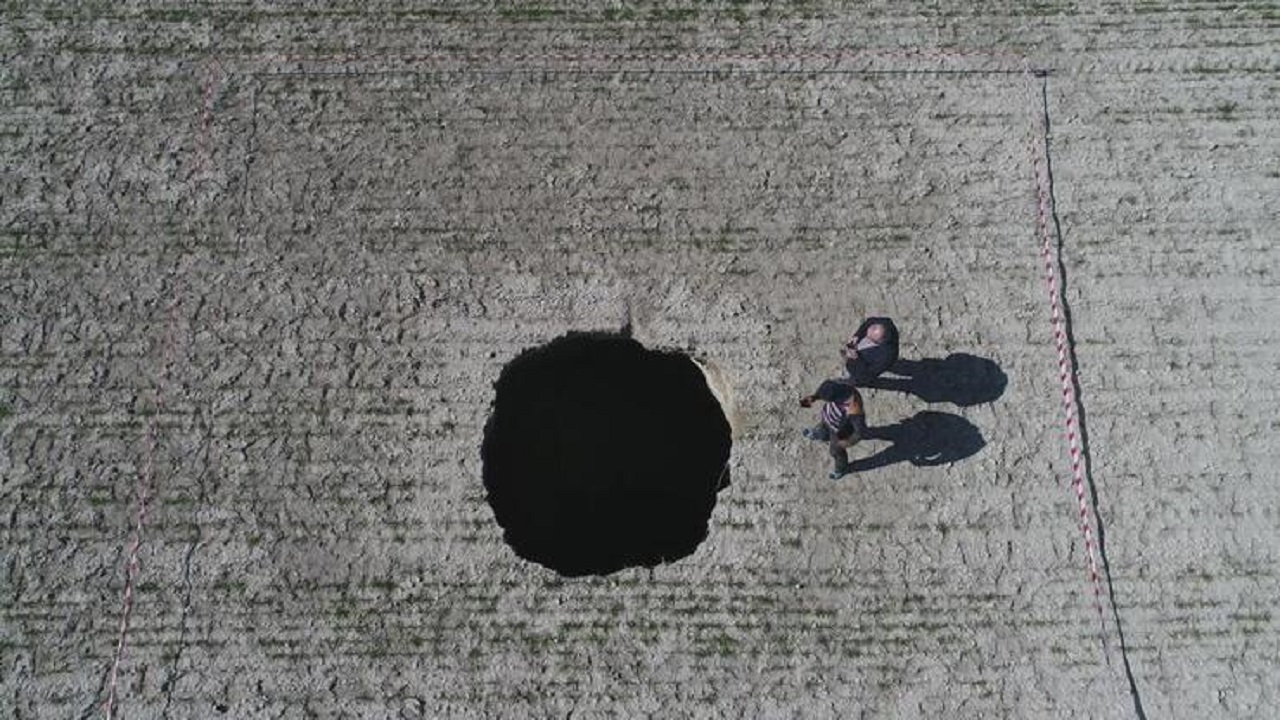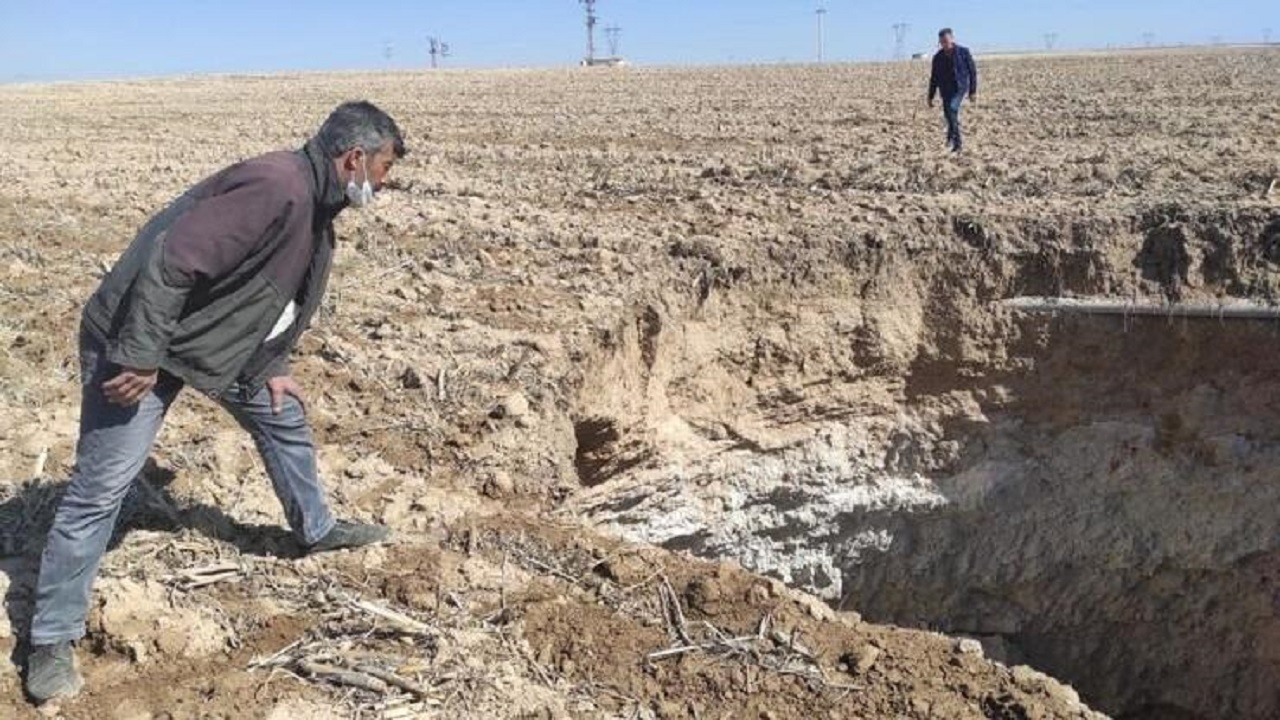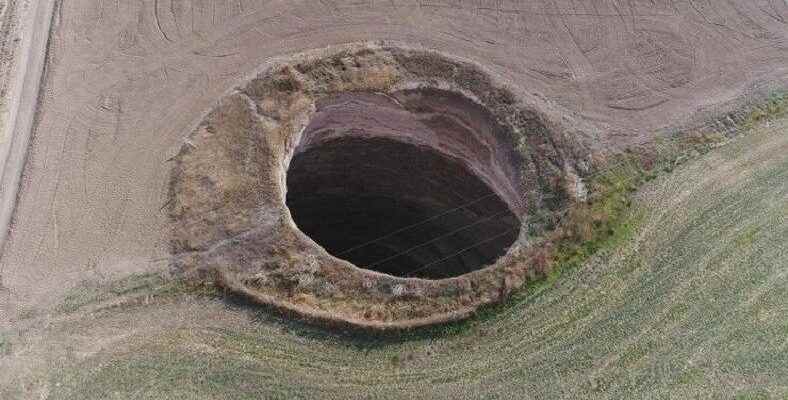In the Konya Plain, the number of sinkholes formed after the withdrawal of groundwater due to drought and unconscious use has exceeded 2,000. Many sinkholes pose a risk in a very large area in the region.
We have begun to feel the effects of the global climate crisis and the gradual decrease in water resources more and more every day. There are many striking examples of this situation in our country. In addition to the fire and flood disasters in the south and north of our country during the past summer, Bad news is also coming from Central Anatolia.
Turkey’s second largest plain and covering almost 20 percent of our agricultural land Disaster signals are ringing in the Konya Plain. More and more sinkholes are formed in the Karapınar district of Konya and the surrounding districts and provinces.
The sinkholes are moving towards risky areas:
In the region where the potholes are formed, AFAD and Konya Technical University Pothole Application and Research Center Directorate are working on the reasons for the formation of the potholes and their solutions. However, the latest information shows that the sinkholes are coming to a level that poses more and more risks. The reason for this is that the sinkholes agricultural areas, residential areas, energy investment areas approaching areas such as
Talking about the ongoing studies in the region, Konya Technical University Obruk Application and Research Center Director Prof. Dr. Fetullah Arik, “We have a project to determine the sinkhole areas in Konya. As AFAD and Konya Technical University Obruk Application and Research Center, we made measurements last year in Karapınar district. 600 sinkholes were detected. This year, we carried out our work in important places in Halkapınar, Ereğli, Emirgazi, Çumra, Karatay and Selçuklu districts. As a result of these studies, in addition to the sinkholes that collapsed in the form of wells, we measured a large number of surface deformations in the form of clefts on the surface, which started from 20 to 30 centimeters and went up to one and a half meters. Total number towards the end of 2021 There were nearly 2 thousand sinkholes.. We observed that there are massive collapsed structures, especially in some areas.” he said.
Illegal groundwater use is one of the biggest causes of sinkholes:

Many different factors can affect the formation of sinkholes at the same time, but according to experts, one of the biggest factors is the unauthorized and unconscious use of groundwater. Drawing attention to this issue, Arık said,‘ around the basin There are 3 times as many undocumented wells as there are 30-35 thousand certified wells.. Data on how much water they produce in these undocumented wells are not available. The most important known data is that the groundwater level continues to decrease every year. While the drops expressed in centimeters since the 1960s were at the level of half a meter-1 meter after the 2000s, and at the level of 1.5-2 meters after the 2010s, only in 2021 there are decreases in the groundwater level of more than 20 meters in some observation wells. As a result of these decreases, the regions where the water-rock interaction is intense fall to lower elevations. Thus, it threatens residential areas more seriously. We have no chance to change the geological and climatic conditions here. The most important factor we can control is that heavy groundwater use can be streamlined a little more. For this, we all have common duties.‘ he said.
In addition, only rains form the water source of the Konya Plain. Due to the climate that is getting drier day by day in the south of our country and in Central Anatolia. extreme decrease in precipitation It also depletes the water in the area.
There are also numerous rifts in the area:

RELATED NEWS
Clock Tower Demolished in Istanbul: Images Showing the Dimensions of the Lodos Disaster that Captured Turkey [Video]
Touching on this issue in his statement, Arık underlines that there are serious negative aspects in this regard in the region. Emphasizing that there are also rifts in different areas in the region, Arık said, “There are many surface crevices in the Konya closed basin that we have observed this year. It’s quite worrying. One of the reasons for their formation is due to the ongoing movement of subsidence plus a fall that has occurred there as there has been excessive groundwater loss. Therefore, negativity affects more than one in the closed basin of Konya. In fact, depending on the faults on the edge of this basin, medium-sized earthquakes may occur from time to time. As a result of the rupture of this 50 km Konya fault zone in pieces, earthquake will be slightly largerHe also drew attention to the relationship between the situation and the earthquake.
Source :
https://www.cnnturk.com/turkiye/konya-ovasi-obruk-ovasina-donusiyor?page=1
